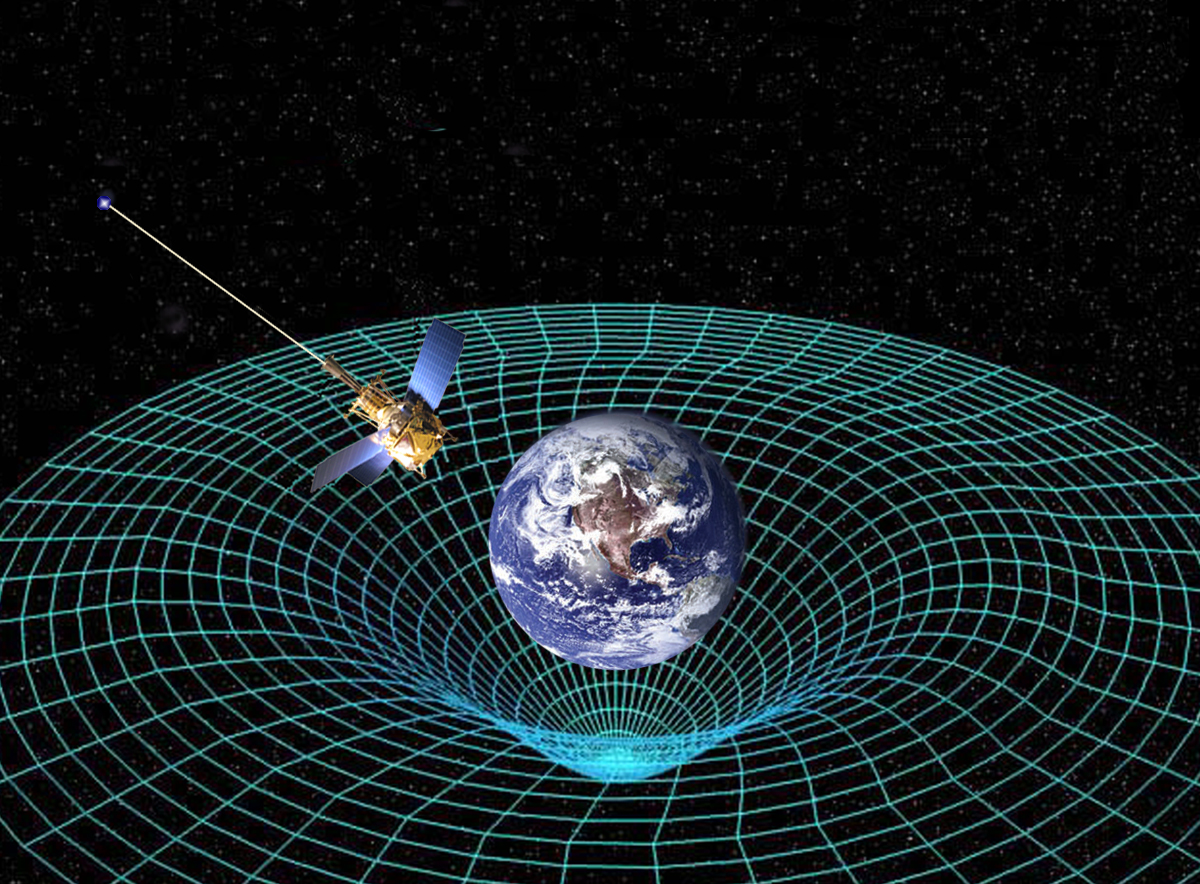Time dilation: The nature of space-time
Aryav Nagar. 03/13/2021

What is time dilation?
Einstein’s theory of relativity suggested a new outlook of space-time itself. He described time as modified; rather than time being a constant moving parameter, it moves relative to an object’s path. Time can be warped or changed by high gravitational forces and immense speeds. Essentially, speed and force can alter the fabric of space-time entirely. Timewarp predominantly causes time to slow down or speed up in the observer’s perspective, which is otherwise known as time dilation.
Speed and time dilation
To understand the effects of time dilation, we need to understand the true nature of light. The reason behind light’s immense speed is the nature of photons. Since photons are massless, outside forces cannot affect the path these particles take. Their massless nature causes not only immense speeds but also instant acceleration. Unlike time itself, light is a constant moving wave, meaning however fast the initial light source is moving, the photons themselves always travel at a constant rate. This speed is also known as the speed of light. Regardless of whether they are emitted from a moving car or a stationary street lamp, the photons all travel at the same speed. On Earth, every second, light travels one light second. Because no feasible mass can travel fully at this speed, let alone an aircraft, let us suppose humanity is, in general constructs, a space carrier capable of achieving speeds that are a large percentage of the speed of light. Since the light on this aircraft, emitted from integrated light sources (such as control panels, inner light bulbs, etc.) can never exceed the speed of light, the photons aboard this high-speed craft travel a greater distance than on a stationary object such as Earth. The light within the aircraft is moving normally, but its journey amplifies due to the craft’s exterior movement. Per every light-second (relative to Earth) onboard the craft, the photons themselves are traveling a light second plus the ship’s velocity. How is this possible? If light always travels at a constant speed, why does one light-second on board the vessel differ from on Earth? This is essentially breaking the laws of physics. To precisely understand how space-time is affected by this inconstant light speed, we need to understand Isaac Newton’s laws of motion and James Clerk Maxwell’s law of electromagnetism.
Newton’s laws described the movement as a relative constant, and his equations refer to these magnitudes as “with respect to.” For example, a train is traveling 40 mph with respect to someone at rest. However, it only travels 20 mph with respect to another train traveling 20 mph in the same direction. Now let us imagine the man at rest was watching the train from space. Considering Earth’s orbital speed, with respect to the man in space, the train moves 67,000 mph. On the other hand, Maxwell found the speed of an electromagnetic wave, such as light, is fixed. It always travels at 670,616,629 mph regardless of who observes it. When faced with inconsistent lightspeed, either Newton’s laws were incomplete and constant speeds did exist, or Maxwell was wrong about light being a universal constant. Einstein realized both laws could coexist by tweaking Newton’s formula. He suggested time itself, for the craft members, must slow down to compensate for the immense speeds such that the magnitude, or one light second, remains constant on both Earth and onboard the ship. Essentially, the closer one travels to the speed of light, the slower time travels.
Time dilation thought experiments - The twin experiment
Since time itself slows down to compensate for light’s uneven magnitude, processes affected by time also slow down. To put this into perspective, imagine two identical twin babies are part of this thought experiment. One baby is left on Earth and another is launched in a rocket traveling at 99.999999999 percent (eight zeros) of the speed of light. Abiding by Einstein’s special theory of relativity, the two twins will experience time very differently. Eighty years go by, respective to Earth, and the near lightspeed rocket lands. Both twins are brought into a room. The baby on Earth would have grown into an older man, but the baby on board the rocket would have only aged one day.
Time and Dilation
Space-time is not only affected by speed but also by gravity. As the force of gravity increases, with larger mass objects, its gravitational field grows stronger. Einstein predicted how this strengthened gravitational field curves the fabric of space. Since every mass has a gravitational field, any object in the universe affects the fabric of space. Although confusing, we can simulate this curvature with an experiment. By holding a piece of paper by its edges and placing a small weight in the center, we see how the page bends or curves down. The curvature, again, has a direct effect on the light itself. Rather than traveling in a straight path, the light itself must curve with respect to space-time curvature. Imagine two light waves are shined from point A to point B. These points are precisely one light-second apart. One path is directly in a straight line whilst the other is under the influence of gravity. The lightwave taking the straight path will reach point B in exactly one second. Due to the curved path the second light wave must travel, it will take light longer than one second to get to point B. As discussed with dilation speed, time itself must compensate for this uneven light path by slowing down. As time passes slower for the bent lightwave, it can travel further within a shorter period of time, therefore reaching point B in one second. The speed of this light wave does not change, but time does.
Applying time dilation to the real world
Although this concept of relativity dilation seems inapplicable to modern technology, as humanity is not near the development of near light-speed intergalactic travel, the idea of time dilation is still used in daily processes. Satellite communication and projection technology take time dilation into account. Since GPS satellites orbit 12,400 miles away from Earth’s surface at a velocity of 17,000 miles per hour, both their high speeds and weakened gravity slow the time around these satellites. This results in a difference of roughly 38 microseconds between the clocks on Earth and the clocks in space (the space-clocks are ticking at a slower rate). GPS satellites use a hyper-precise clock to determine exact locations on Earth’s surface (more information about GPS location can be found here). To the naked eye, 38 microseconds are unnoticeable, but this delay can account for a 6-mile offset for GPS satellites. GPS travel would be much worse than simple unreliability. For example, a six-mile inaccuracy in terms of air travel could potentially be dangerous. Aircraft might be directed away from safe airports, and air traffic control would be nearly impossible. To account for time dilation, satellites’ clocks tick 38 microseconds faster than the clocks on Earth. This allows both clocks to tick at the same rate as the faster-paced clocks cancel the slowed time. So next time you look up and see an aircraft, know that Einstein’s theory of relativity helps it travel safely and accurately.
Cover Photo: (Live Science)
